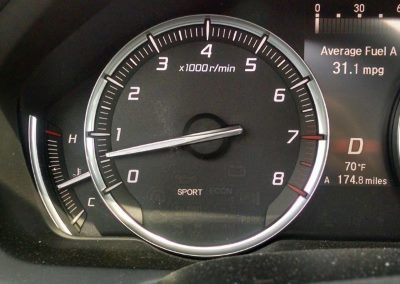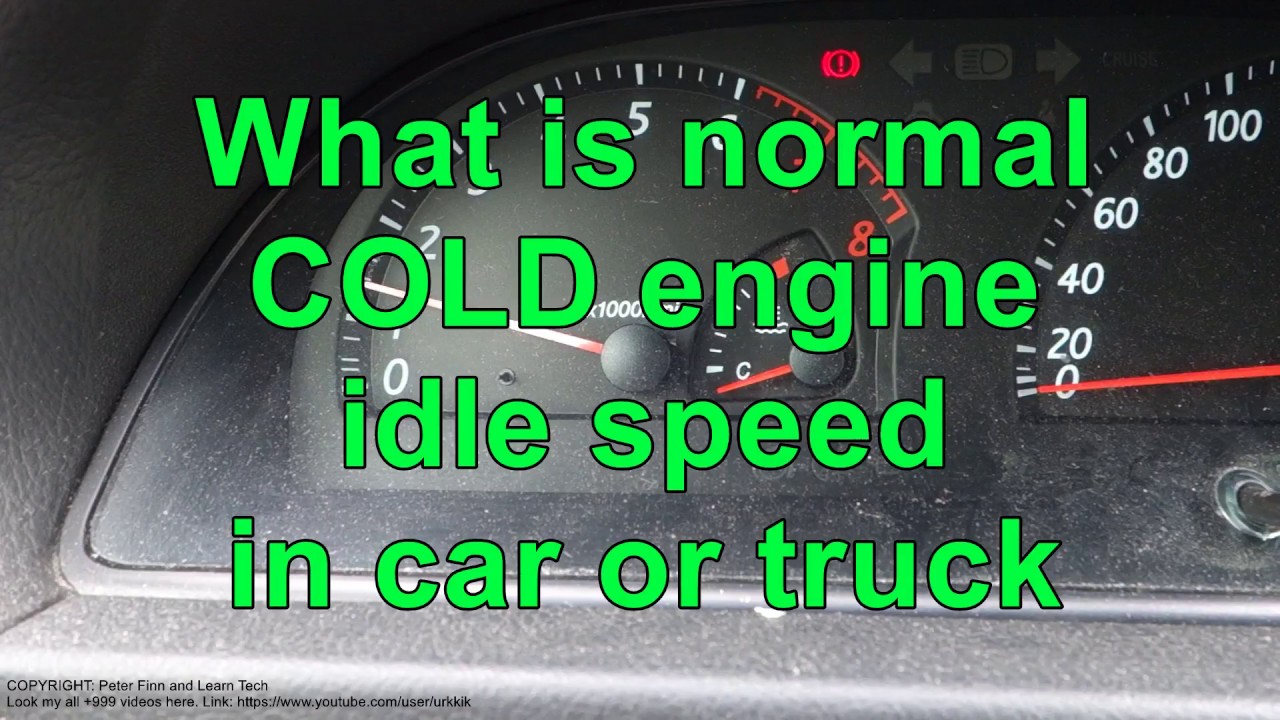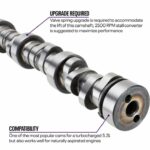The resting RPM for a car can vary depending on the make and model, but a typical idle speed is around 600 to 1000 RPM. Fluctuations in RPM at idle may indicate an issue with the fuel delivery, air intake, or governor system.
It is normal for the engine RPM to be higher when the car is cold and gradually decrease as it warms up. If the car shakes while idling, it could be a sign of a problem such as a misfiring engine or faulty spark plugs.
Regular maintenance and troubleshooting may be necessary to address any issues with the car’s idling RPM.

Credit: www.reddit.com
Why Resting Rpm Is Important For A Car
Resting RPM, also known as idle RPM, plays a crucial role in ensuring the smooth operation of a car’s engine. It is the speed at which the engine runs when the vehicle is not in motion. Maintaining the correct resting RPM is important for several reasons. Firstly, it helps in reducing unnecessary wear and tear on the engine components, prolonging their lifespan. Secondly, it contributes to improving fuel efficiency, as an optimized resting RPM ensures that the engine is not working harder than necessary when the car is stationary. This can translate into significant fuel savings over time. If you notice any issues with your car’s resting RPM, such as fluctuation or shaking, it is advisable to have it inspected by a qualified mechanic to identify and resolve any underlying problems.
Factors Affecting Resting Rpm
Resting RPM of a car is the speed at which the engine operates when the vehicle is in idle mode. Several factors can affect the resting RPM of a car:
Engine Type And Size
The type and size of the engine can determine the resting RPM of a car. Different engines have varying performance characteristics, which can influence idle speed.
Temperature And Weather Conditions
Temperature and weather conditions can impact the resting RPM of a car. Cold weather can cause the engine to run at a higher idle speed initially until it warms up, while hot weather may cause a lower idle speed due to increased engine heat.
Operating Accessories, Such As Air Conditioning
The use of accessories like air conditioning can affect the engine’s resting RPM. When the AC is turned on, it puts an additional load on the engine, which can cause the idle speed to increase slightly.
It is important to note that resting RPM can vary depending on the make and model of the car. If you notice any significant changes in the idle speed or experience unusual shaking while idling, it is recommended to have your car checked by a qualified mechanic to diagnose and resolve any potential issues.
Optimal Resting Rpm Range For Different Car Types
Find the optimal resting RPM range for different car types to ensure smooth idling. Understanding the RPM fluctuations and addressing issues like shaking or rough idling can help maintain a healthy engine. Take necessary steps like cleaning the carburetor or adjusting the governor system to keep the resting RPM within the normal range.
| Car Type | Optimal Resting RPM Range |
|---|---|
| Sedans and everyday cars | 600-1000 RPM |
| Sports cars and high-performance vehicles | 800-1200 RPM |
| Diesel engines | 700-900 RPM |
Common Problems Related To Resting Rpm
Common problems related to resting RPM in a car can include shaking while idling, fluctuating RPM at idle, and rough idle and instability. When a car shakes while idling, it could indicate issues with the engine, such as misfiring spark plugs or a worn-out engine mount. Fluctuating RPM at idle can be caused by fuel delivery problems, air leaks, or governor system malfunctions. This can usually be resolved through cleaning or overhauling the carburetor, adjusting the governor, or changing the air filter. Rough idle and instability can be attributed to various factors, including a faulty oxygen sensor, clogged fuel injectors, or a vacuum leak. To fix high idle or low idle with shaking, it is essential to identify and address the underlying cause. Regular maintenance, such as spark plug replacements and air filter cleanings, can help maintain a stable resting RPM in a car.
Causes And Solutions For Resting Rpm Issues
Resting RPM issues in a car can be caused by various factors, including fuel delivery problems, air leaks, and governor system malfunctions. To address these issues, certain solutions can be implemented.
- Cleaning or overhauling the carburetor can help improve fuel delivery.
- Checking and cleaning the fuel injectors ensures proper fuel flow.
- Inspecting and repairing any air leaks or vacuum issues is crucial.
- Examining and fixing vacuum hoses can prevent RPM fluctuations.
- Fixing or replacing the intake manifold gasket can provide a stable resting RPM.
- Adjusting or replacing the governor can help regulate the engine’s idle speed.
- Regularly changing the air filter can prevent dirt and debris from affecting the RPM.
By addressing these causes and implementing the suggested solutions, resting RPM issues in a car can be effectively resolved.
Proper Maintenance For Resting Rpm
Proper maintenance for resting RPM is essential to ensure the smooth operation of your car. Regular engine tune-ups are important to keep the idle RPM at the right level. During a tune-up, the mechanic will check and adjust the idle speed, which should typically be around 600-1000 RPM for most cars. This helps prevent the engine from idling too high or too low, which can cause issues such as shaking or rough idling.
In addition to adjusting the idle speed, it is also important to inspect and clean the throttle body. Over time, dirt and carbon deposits can accumulate, affecting the airflow and causing irregular idle RPM. Cleaning the throttle body can help restore smooth idle.
Performing scheduled maintenance tasks, such as changing air filters, spark plugs, and fuel filters, is another important aspect of maintaining optimal resting RPM. These tasks help ensure proper combustion and can prevent issues such as engine hunting and surging at idle.
In conclusion, by following these regular maintenance practices, you can help maintain a stable and appropriate resting RPM for your car, ensuring its smooth operation and longevity.
Tips For Fixing High And Low Idle Rpm
|
What Does It Mean If My Car Shakes While Idling? – Hollenshade’s Auto Service Why Is My Engine Idling High and What Should I Do About It? – Azuga As the engine warms up, its RPMs will gradually slow down to curb idle speed. So yes, it is normal for an engine to race after a cold start. How many RPMs should my car idle? What causes a car to idle up and down? Is it normal for RPM to fluctuate at idle? What RPM Should A Car Idle At? – AutoPadre Car idle is rough (idling RPM not stable) – Wheels Wisdom What RPM Should A Car Idle At? – Mechanic Base What RPM Should a Car Idle at? And Does it Matter? – dubizzle What RPM Should My Car Idle At? – And Why It Matters – Carzaza What should a car resting RPM be? What Does It Mean If My Car Shakes While Idling? – Hollenshade’s Auto Service Is it normal for RPM to fluctuate at idle? Engine hunting and surging at idle is usually caused by a fuel delivery, air leak, or governor system problem. Cleaning/overhauling the carburettor, adjustment of the governor, and/or changing the air filer may be required. Why does my engine’s RPM seem to fluctuate (runs rough)? Resting rpm car speed Normal idle RPM when AC is on What is the normal RPM when you start the car Car idles rough but drives smooth How to fix high idle on car Car idling low and shaking |
Frequently Asked Questions On Resting Rpm Car
What Should A Car Resting Rpm Be?
The resting RPM of a car should typically be around 600-1000 RPM, depending on the specific make and model. Fluctuations in idle RPM may indicate underlying issues with fuel delivery, air leaks, or the governor system. Cleaning the carburetor, adjusting the governor, or changing the air filter may be necessary to address rough idling or high idle problems.
Is 1500 Rpm Idle Bad?
A 1500 RPM idle is not necessarily bad. It can vary depending on the car’s make and model. However, if the RPM is consistently high or fluctuating significantly, it may indicate an issue with the fuel delivery, air leak, or governor system.
It’s best to have the car checked by a professional to determine the cause and address any potential problems.
Is The Rpm Supposed To Be At 0 When Parked?
No, the RPM should not be at 0 when parked. The engine should be idling at a specific RPM, typically between 600-1000, to ensure proper functioning of the vehicle. If the RPM is at 0, there may be an issue with the engine or idle control system that needs to be addressed.
Is It Normal For Rpm To Fluctuate At Idle?
Fluctuating RPM at idle can indicate issues like fuel delivery, air leaks, or problems with the governor system. It’s not normal and may require cleaning/overhauling the carburetor, adjusting the governor, or changing the air filter.
Conclusion
Understanding the resting RPM of your car is essential for maintaining its performance. While it is normal for the engine to race after a cold start, the RPMs should gradually slow down as the engine warms up. If you notice fluctuations in the idle speed or your car shakes while idling, it could indicate underlying issues such as fuel delivery problems or air leaks.
It is important to address these issues promptly to ensure smooth operation and prevent further damage to your vehicle. Remember, regular maintenance and timely repairs are key to keeping your car running smoothly.








